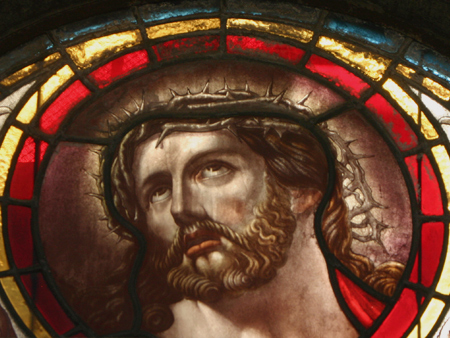
Documenting Recoleta Cemetery in Buenos Aires since 2007
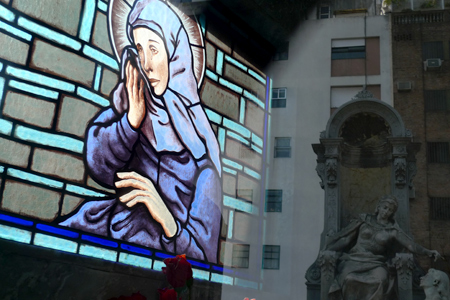
Found inside the Familia Ovidio Giménez-Ema Korek tomb. Previous reflection photos can be found here & here. Sally Blake sent me a heads-up earlier this year about Julie-Anne Cosgrove who takes beautiful photos in the same vein. Check out her blog!!
Leave a Comment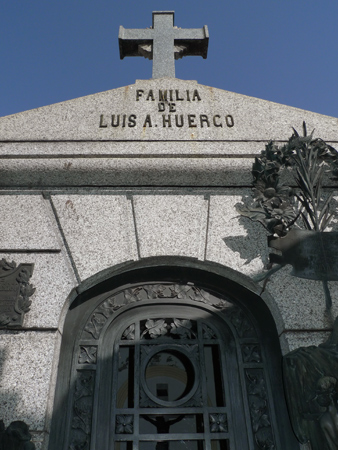
Born in Buenos Aires in 1837, Luis Huergo completed his high school education in Maryland, USA then went on to become the first civil engineer to graduate from an Argentine university. He coordinated the construction of bridges throughout the Province of Buenos Aires with British assistance, built sections of new railroad, & improved the infrastructure of a growing nation.
Although he served as a Senator in the 1870’s as well as Dean of what eventually became the Engineering faculty, Huergo is most remembered for a project he never completed: a new cargo port for Buenos Aires. He had already deepened the exit for the shallow Riachuelo, allowing transatlantic liners to enter directly. It was only natural for Huergo to be part of a design contest for the new port.
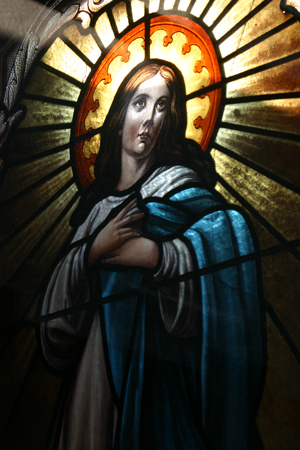
Huergo had some tough competition & an alternative plan was proposed by local merchant Eduardo Madero. Madero’s design was accepted over Huergo’s with ships entering through the southern canal, loading & unloading goods in any of four dykes, then exiting north. By the time Puerto Madero was inaugurated in 1897, it was obsolete. Madero’s design did not allow expansion of any kind… much needed when ships were growing larger & larger. Congestion was a considerable problem during Puerto Madero’s heydey with an amazing 32,000 embarkations made in 1910 alone:
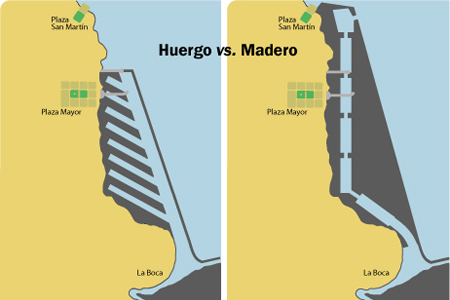
To add capacity to Puerto Madero, Huergo’s design was reworked in 1907 & completed by 1919. The in-and-out design of Puerto Nuevo is more efficient & continues to function as the current port for Buenos Aires. All cruise & container ships dock there, & a gigantic plaque to Huergo highlights his biggest BA contribution:
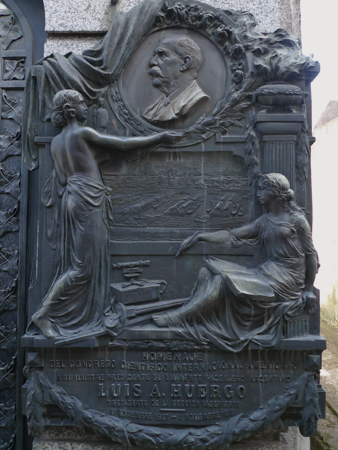
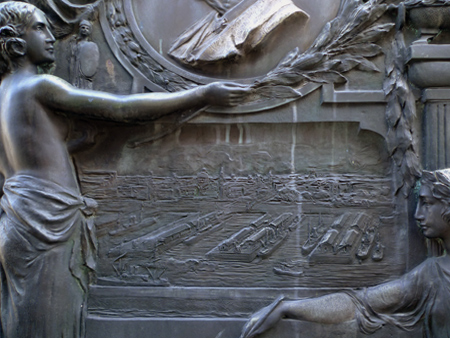
Huergo’s son, Eduardo, also became an engineer & was responsible for the rectification of the Riachuelo. Those curves were replaced by a straight line in Eduardo beginning around 1927:
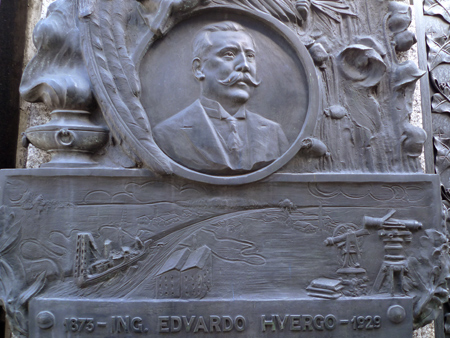
At the age of 73, Luis Huergo formed part of a national commission dedicated to petroleum exploitation in Patagonia. He advocated government control to avoid the emergence of monopolies like Standard Oil while Dr. Pedro Arata, also part of the five-member board, thought private companies would be a better option. Huergo won in the end as the commission transformed into Yacimientos Petrolíferos Fiscales, remaining a state-run company until 1991. Huergo passed away in 1913 & left a legacy which remains apparent even 100 years after his death.
Leave a Comment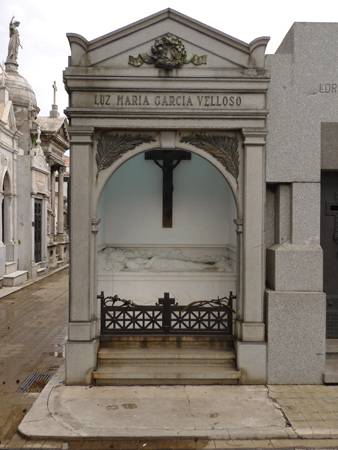
Close to the entrance gate, the Art Nouveau effigy of Luz María García Velloso draws a lot of attention. Beautiful & in a highly visible location, it only seems natural that an urban legend would develop around her death.
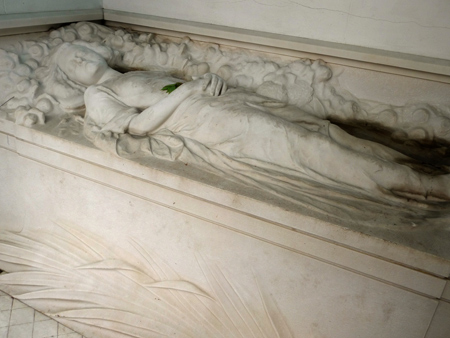
Supposedly a victim of leukemia at the age of 15, Luz María’s mom spent several night vigils at the cemetery… actually sleeping inside the vault. Much later, men walking near Recoleta Cemetery reported an encounter with a young woman dressed completely in white. The most common version claims this woman would accompany them to a bar, get a chill then ask to borrow her date’s jacket. Next she would accidentally stain it with whatever they were drinking & take the jacket with her when they said goodnight.
The following day the man somehow contacts her mother to get the jacket back, & she explains that the young woman is already dead! In desperation, he goes to the cemetery & finds his jacket draped over the effigy. While none of the above has been confirmed, it makes for an interesting story… probably one of the most common urban legends in the world.
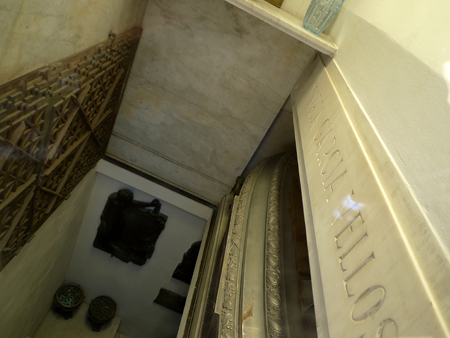
Fortunately some factual information about the rest of the family —also buried here— is available. Luz María’s father, Enrique García Velloso, was of Basque descent & heavily involved in the arts at the beginning of the 20th century in Buenos Aires. He directed the first movie version of Amália by José Marmol in 1914. Two years later he wrote Mamá Culepina about the barracks following the troops of Lucio V. Mansilla.
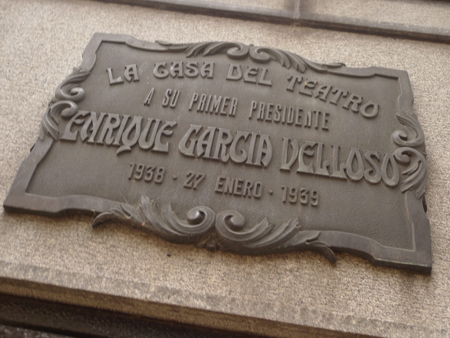
All this artistic activity led Enrique to be named the first President of the Casa del Teatro—an actors association/retirement organization based on Avenida Santa Fe. Still possessing a popular theater, the fantastic Art Deco building was designed by Alejandro Virasoro… the same architect who built the Defferrari family vault.
Enrique’s cultural connections expressed their sorrow for the death of Luz María with poetic plaques on the left side of the family vault:
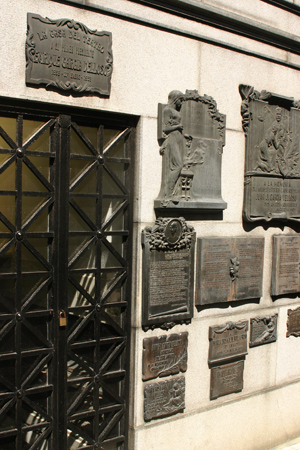
Unfortunately the elaborate interior painting is missing these days, but the ceiling’s stained glass remains intact:
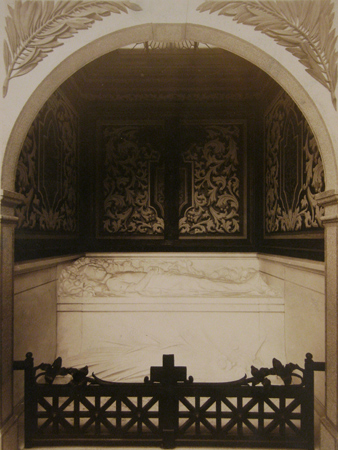
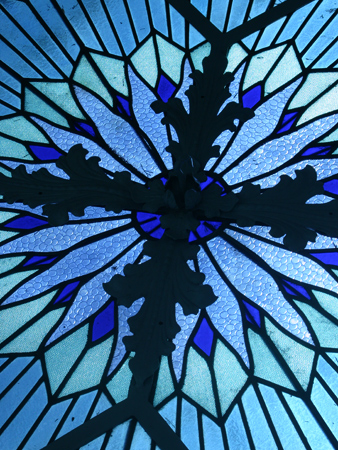
Second to last photo courtesy of the Archivo General de la Nación. Like Art Nouveau? Learn about the architects of the era, their individual styles & what makes Art Nouveau in Buenos Aires so unique with a 33-page guide from our sister site, Endless Mile.
14 Comments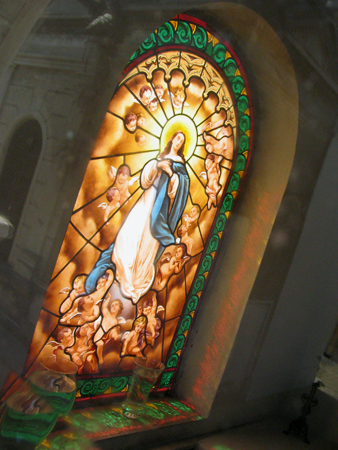
Not a bad shot considering how difficult it was to take. The Ramos family likes their privacy so mausoleum doors are covered with closed curtains. But a small glass panel above the doors allows for an arm-stretching, blind shot & reveals this beautiful stained glass image of the Immaculate Conception.
2 Comments